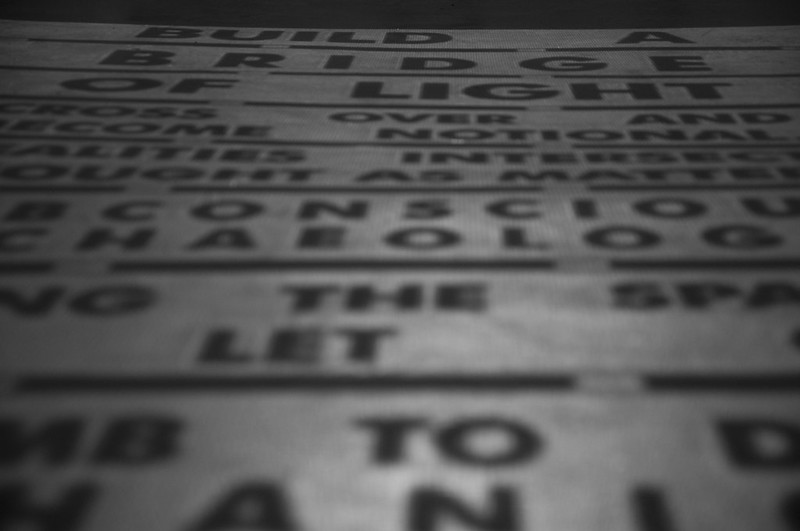
On Sights Unseen
by D.Fyans

Reality is an experiential affair, we all, at the end of the day, are the centre of our own universes, the spaces we construct are suns around which planets of relationship orbit. Similarly, we build vast cities of nothing but light and thought within us, time and space intertwine and form new suburbs, non-euclidian topography unfolds inwards.
Our childhood bedroom exists in the same space, in the same house as the living room from your first flat, the smell of the ocean drifts down the stairs in your friend's close, the dark endless corridors you are still chased down in nightmares twist and turn and inhabit the same neighbourhood where you last had that awful, sinking Dread which knotted your guts and made you want to curl up into a singularity and vanish. Everything exists concurrently, in the blink of an eye, it is years ago, it is still now, it has always been now. Via the unreliable patina of memory, we continuously re-edit the same scenes over and over, filling in blanks with fictional constructs, cutting out the bits where the acting was terrible or the dialogue stilted.
Ivan Chtcheglov, the unpronounceable visionary, proto-situationist, failed blower up of the Eiffel Tower and subsequent resident of La Chesnais mental hospital, investigated the re-mapping of existing physical space in his 1953 work, Formula For A New Urbanism which stands as a call to re-imagine the geography of a city via its psychic landscape and a new city to rise from the ashes of process.
"The districts of this city could correspond to the whole spectrum of diverse feelings that one encounters by chance in everyday life.
Bizarre Quarter — Happy Quarter (specially reserved for habitation) — Noble and Tragic Quarter (for good children) — Historical Quarter (museums, schools) — Useful Quarter (hospital, tool shops) — Sinister Quarter, etc.".
And so, every space we pass through makes an indelible mark upon us, in traversing it, the space becomes a part of us, stored and sorted into our own revisions of Chtcheglov's Quarters.
Another key text which approaches this idea of internal space comes from Xavier De Maistre in his A Journey Around My room (1871). Written while under house arrest in Turin, De Maistre embarks on narrative journey investigating the physical space contained within his room stating “I shall traverse my room up and down and across, without rule or plan. I shall even zig-zag about, following, if needs be, every possible geometrical line. I am no admirer of people who are such masters of their every step and every idea.”. Along each path, he describes the objects he physically encounters and then expands on the history, emotion, and the psychic residue of each location, every pathway leading to a new area of discourse, every object becoming a memory more tangible than its status as a trigger.
As with the contents of De Maistre's room, so we become a curated series of triggers. We look at an object, or think about a space, and we are there, emotion or memory conjuring that space and time in our mind's eye. Time only works in the outside world, when navigating this drift, in the passing of the blink of an eye, the duration of entire lives can play out on this platform.
Our physical bodies can be seen then, as a boundary, a threshold between the infinity of the universe, expanding outwards from us and the arguably 'more infinite' Hilbert space (infinity+1) which we carry within us, the Source Wall between these disparate dimensions. As artists, we are in the privileged situation of being able cross freely between worlds and carry back artifacts into the physical world by means of subconscious archaeology. Through the act of creation, we solidify a manifestation of concept. In Tibetan Buddhism and a number of esorteric magical systems exists the idea of the Tupla, a physical form, rendered in the world from pure focussed thought. So go, explore, map, grab hold of the big, strange, scary inhabitant ideas and drag them back into this version of reality, the more crossing points, the more interventions that remain anchored in this domain, the more points of weakness in the wall between realities the better, there is no end to space other then the limitations we place on ourselves.